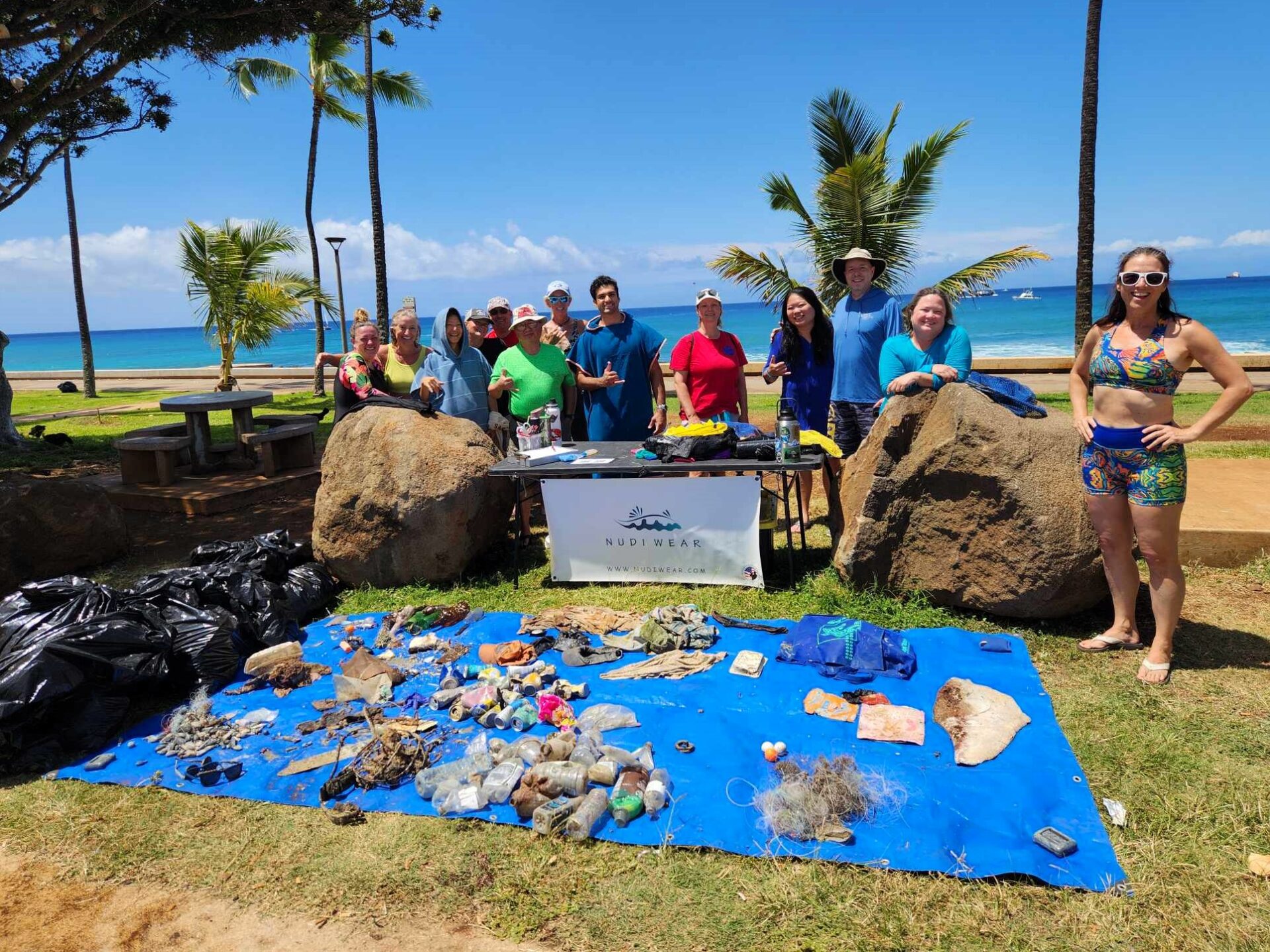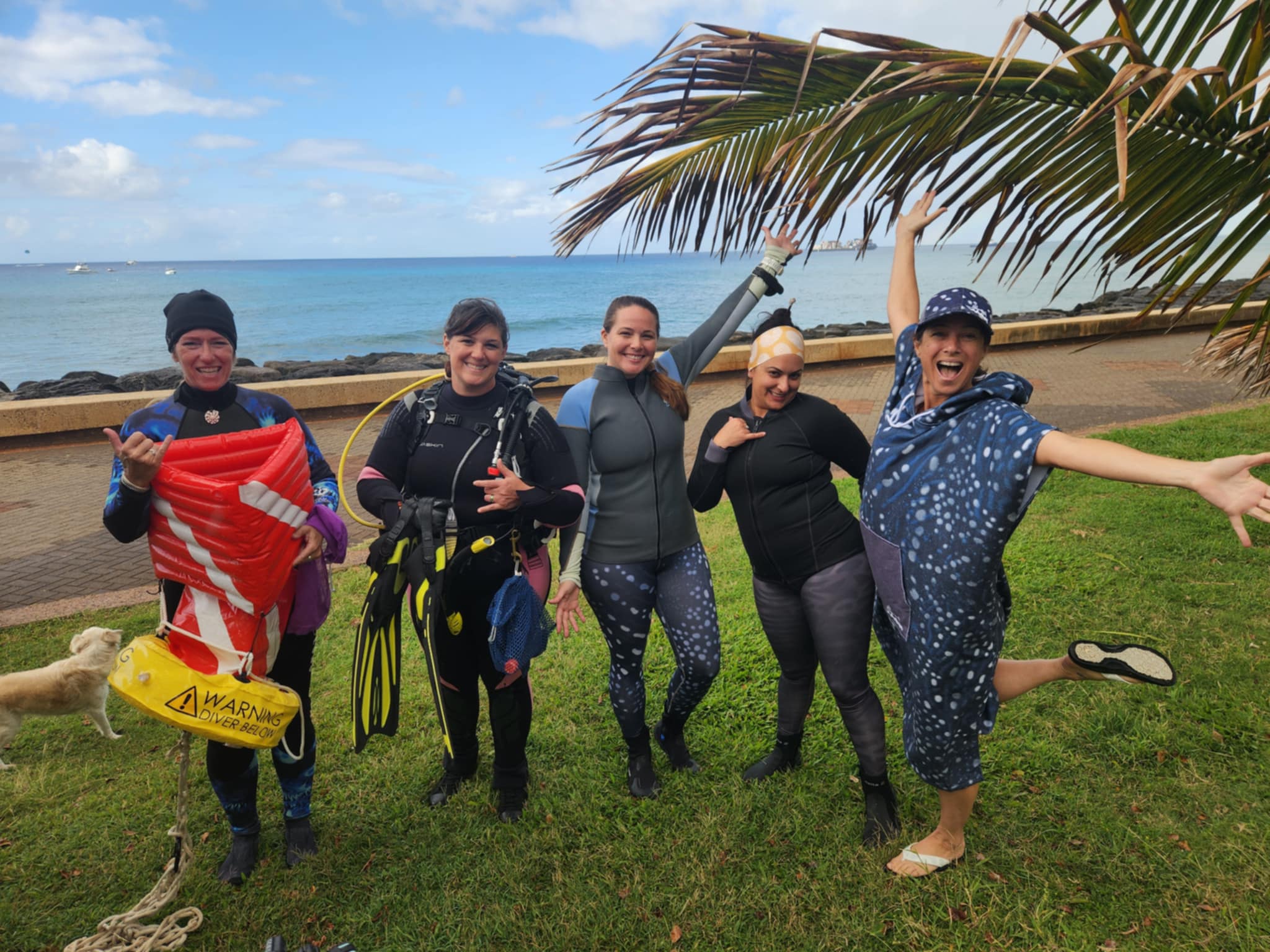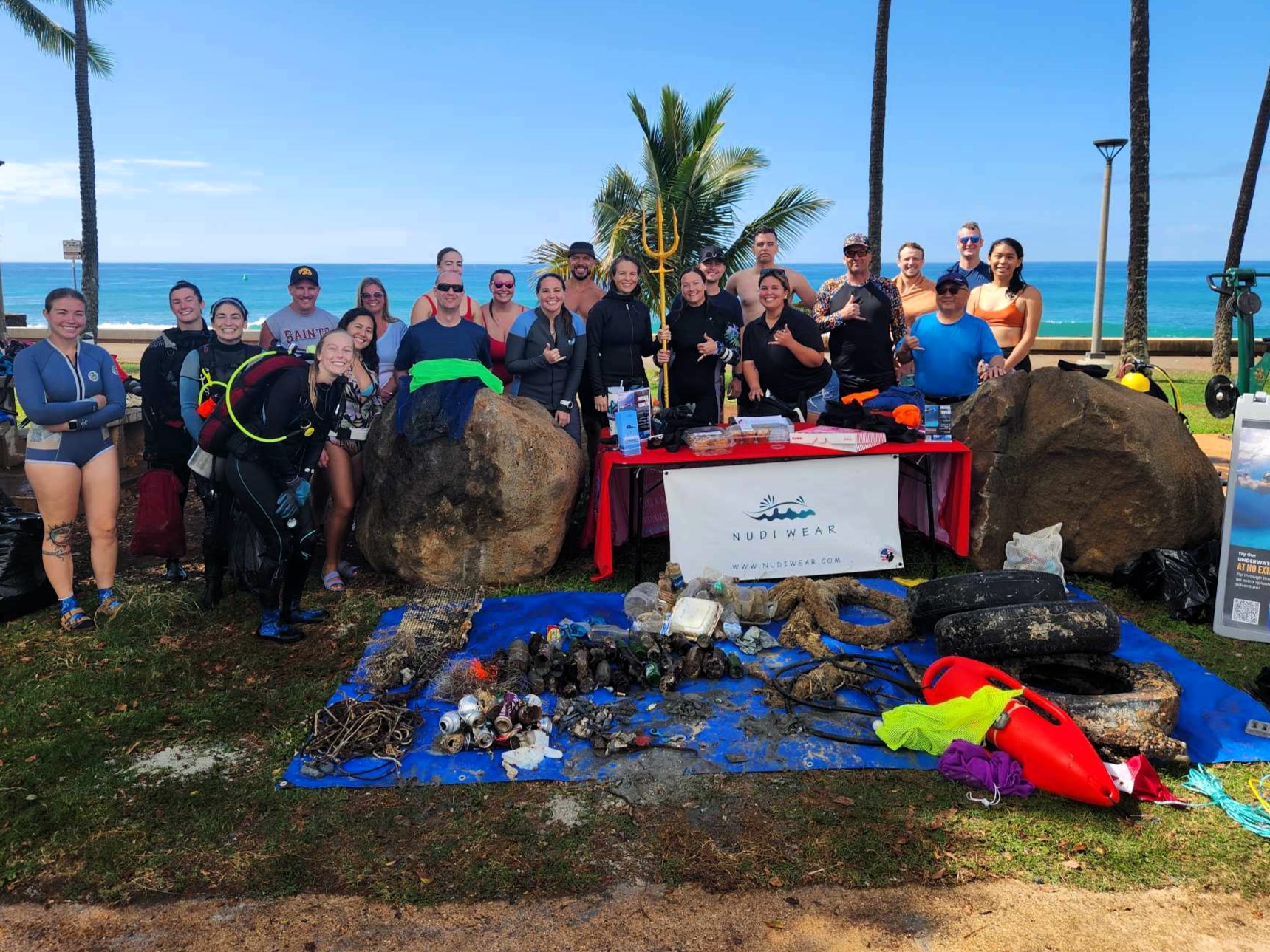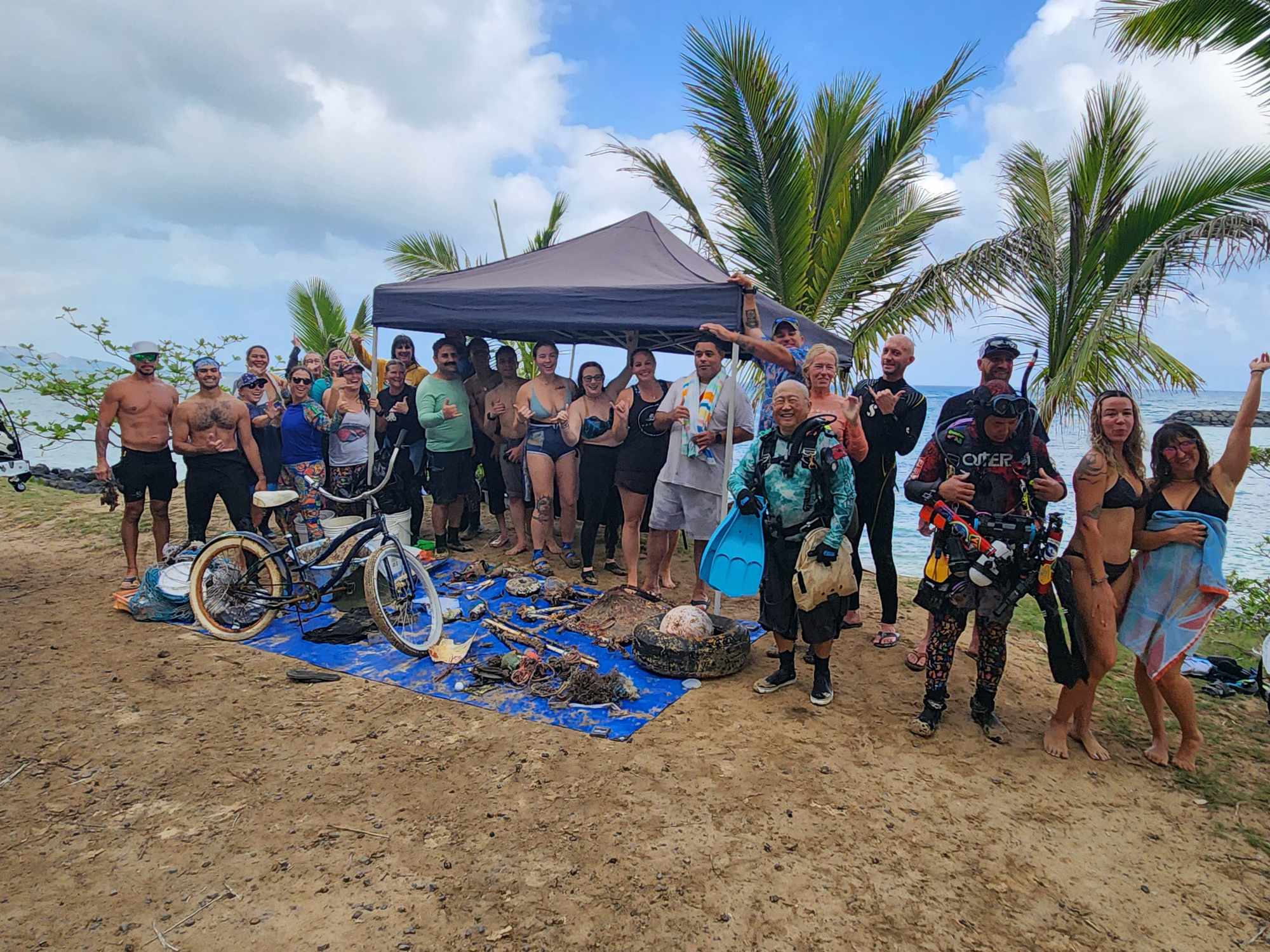It goes without saying: we LOVE nudibranchs! Between their psychedelic colors and hypnotic dance moves, you really can’t go wrong with these trippy sea slugs.
Nudibranchs are part of a huge and diverse group of animals called mollusks. They’re related to animals like garden snails, clams, and even octopuses. To get a good idea of what a nudibranch is, imagine a snail you find in your front yard, except it’s allergic to freshwater, has no shell, and is dressed for Coachella.
Today we’re listing off some fun facts about our well-loved mascot, the nudibranch!
1. They have “naked gills.”
Call the authorities, we’ve got a streaker on the loose!

Fun fact: this is a dorid nudibranch | Photo by Swanson Chan on Unsplash.
Just kidding. Notice the tufts of hair-like strings on the back of this little guy in the photo? Those are its gills! “Nudi” means naked and “branch” means gills— so these guys are animals with gills that are exposed (AKA naked) to the surrounding water.
There are two major groups of nudibranchs. The first is the “dorids,” which have clusters of gills on their backs as shown above. The other group is the “aeolids,” which have spike-like structures called “cerata.” These cerata technically aren’t gills— they have multiple purposes and breathing is one of them.
Fun fact: the cerata have part of the nudibranch’s digestive tract inside them!

An aeolid nudibranch sporting some fashionable colors. |Photo by Pascal van de Vendel on Unsplash.
2. They look a lot different as babies.
Nudibranchs start life out as larvae and, at this stage, look like a normal snail. They have a shell and have gone through a process called “torsion.”
Imagine going to a Bikram Yoga class, twisting yourself into an impossible position, then going home and having a smoothie without untwisting. This is what torsion is, and it’s the way your average snail prefers to live their life.
But here’s that next fun fact for you: nudibranchs are not your average snail— they’re a type of sea slug! They drop the shell, untwist themselves, and go about their day. It would be like starting your life as a pretzel but untwisting yourself before going to high school.
3. Their colors come from the animals they eat.
No one embodies “you are what you eat” more than the nudibranch. They munch on brightly colored animals like coral, anemones, and sponges. Those pigments give nudibranchs their wild hues.
Here’s another fun fact: nudibranchs are voracious carnivores!
Nudibranchs spend most of their time crawling on the animals they eat. A majority of nudibranchs are only a few inches long, and the biggest barely clears a foot in length. Therefore, camouflaging themselves to match their prey is their go-to strategy. And since they lack a shell, this is a great defense against larger animals who may want a slow-moving snack.
Some species are poisonous and they want potential predators to know it. Like a silica gel packet that says “Do Not Eat,” a nudibranch’s colors can act as a warning.
And (fun fact!) some nudibranch species aren’t poisonous but mimic the colors of their poisonous cousins. This keeps the nudibranch safe from predators without the hassle of being actually poisonous.
4. They reuse other animals’ defense systems.
Fun fact: some species of aeolid nudibranch eat animals with “nematocysts,” or stinging cells. Have you ever been stung by a jellyfish? What you feel are the nematocysts firing off in your skin. While that may ruin your day at the beach, some nudibranchs see that as a Las Vegas-style buffet.
These nudibranchs not only eat animals who have nematocysts— like jellyfish— but reuse the stingers for defense. They move unfired cells up from their digestive track and position them at the ready. That’s the equivalent of eating a harpoon gun for breakfast and it showing up on your back later, ready to fire.
5. Their anatomy is quite different from a human’s.
To put yourself in the shoes of a nudibranch, imagine you have no bones, arms, legs, or neck. Now imagine your lungs are outside your body and located where your legs used to be (fun fact: dorid nudibranchs have their gills circling their booty).
Also, you’re colorblind and only notice changes in dimness. Instead of your teeth sitting in your gums, they’re on your tongue. Your nose is flipped inside out— it looks like two antennas, or in some cases, bunny ears.

These two bunny ear-like structures help the nudibranch smell. | Photo by Joan Li on Unsplash
To swim you move like one of those balloon men at a car sale (check out this video). Also, you have both female and male genitalia (fun fact: that’s more common than you’d think in animals).
Needless to say: these animals experience life in a massively different way than we do!
In the Moody for Nudis
Between their charismatic colors and fascinating anatomy, it’s no wonder there’s a huge community of scientists, divers, and ocean-enthusiasts who love nudibranchs!
One more fun fact for the road: sometimes SCUBA divers will ask each other to “Send Nudis,” which just means sending photos of nudibranchs to each other.
If you’ve ever seen a nudibranch in the wild, tell us about it in a comment below!
Sources
- Formel, Nathan. “A Colorful Defense.” Khaled bin Sultan Living Oceans Foundation. 26 September 2013. https://www.livingoceansfoundation.org/a-colorful-defense/
- Goodheart, Jessica. “How Sea Slugs Steal the Defenses of Their Prey.” Smithsonian. January 2014. https://ocean.si.edu/ocean-life/invertebrates/how-sea-slugs-steal-defenses-their-prey
- Rudman, W.B., 2000 (March 16) Digestive system of a dorid nudibranch. [In] Sea Slug Forum. Australian Museum, Sydney. Available from http://www.seaslugforum.net/find/dorigut
- Rudman, W.B., 1998 (October 28) Torsion and detorsion. [In] Sea Slug Forum. Australian Museum, Sydney. Available from http://www.seaslugforum.net/find/torsion
- Silen, Andrea. “Nudibranch.” National Geographic Kids. https://kids.nationalgeographic.com/animals/invertebrates/facts/nudibranch#:~:text=Over%203%2C000%20species%20of%20nudibranchs,weigh%20up%20to%203.3%20pounds.
- “Spanish Dancer: Wavelength Snorkeling Great Barrier Reef.AVI.” YouTube, uploaded by WavelengthIII, 1 February 2010. https://www.youtube.com/watch?v=V6H01cUSpfQ
- Taraporevala, Neville F et al. “Precocious Sperm Exchange in the Simultaneously Hermaphroditic Nudibranch, Berghia stephanieae.” Integrative organismal biology (Oxford, England) vol. 4,1 obac030. 1 Aug. 2022, doi:10.1093/iob/obac034. https://www.ncbi.nlm.nih.gov/pmc/articles/PMC9449679/
- “True Facts: Freaky Nudibranchs.” YouTube, uploaded by Ze Frank, 14 March 2020. https://www.youtube.com/watch?v=F7V8DRfZBQI
- University of Queensland. “Copycat sea slugs vary in toxicity and taste.” Phys Org. 7 June 2018. https://phys.org/news/2018-06-copycat-sea-slugs-vary-toxicity.html







